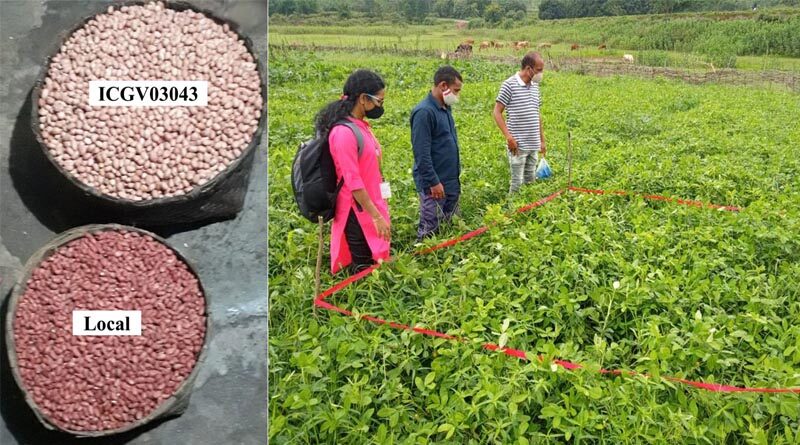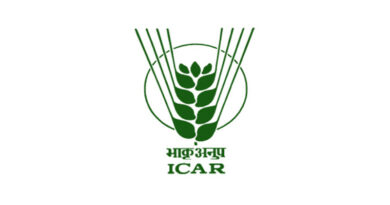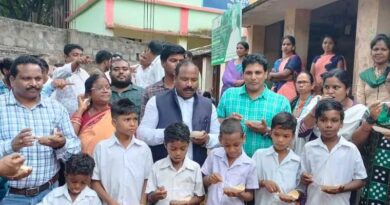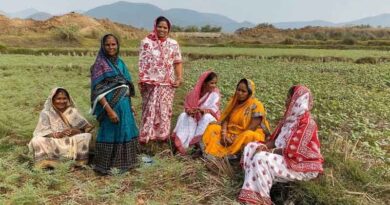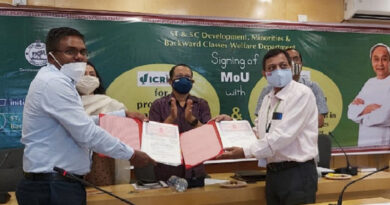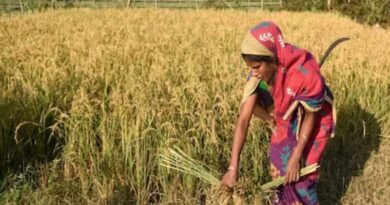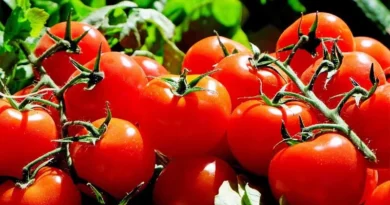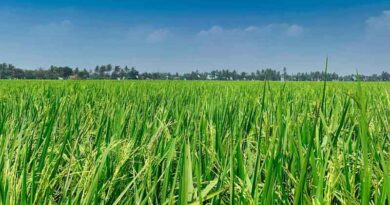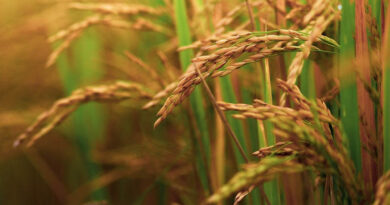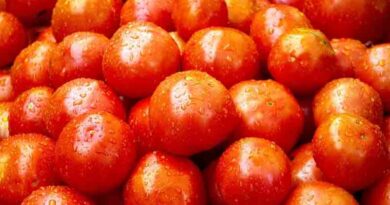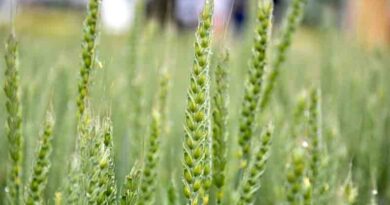Improved seeds and better agronomic practices increased groundnut pod yield by 40% in Koraput, Odisha
09 February 2022, Odisha: Traditional rainfed agriculture is the main source of livelihood for farmers in the Semiliguda block of Koraput. Considering this, the ongoing Odisha Livelihood Mission (OLM) has funded project activities in the district emphasizing sustainable intensification of traditional rainfed agriculture to boost productivity and improve livelihood through science-based interventions. The project activities are spread across 15 villages in four Gram Panchayats (GP) viz. Kunduli, Rajput, Pakajhola and Pitaguda.
Odisha ranks sixth in India in terms of groundnut production. However, unavailability of quality seed locally during the planting season at an affordable price has been a major problem for the smallholder farmers. Almost all the farmers in the project villages procure groundnut seed informally from fellow farmers. Application of chemical fertilizers is also found to be limited in these resource-poor remote villages mainly due to lack of awareness and affordability.
In the absence of proper market linkages, adoption of a complete package of practice may increase the productivity in the short-term, however increase in input cost may not be sustainable particularly beyond the project period. Hence, for better adoption, the project activities were based on data from the onset. Stratified soil sampling and detailed physico-chemical analysis were carried out as an entry point activity. Soil analysis revealed widespread Sulfur and Boron deficiency across the project villages (Fig 1). Such micronutrient deficiencies adversely affected groundnut cultivation, causing stunted growth, general yellowing of plants and delayed maturity in these regions. Since farmers, were unaware of the problem, they were using more and more NPK fertilizers, with little improvement in yield, and this further reduced their net income. As a result, the net-cultivated area in these traditional groundnut (rabi) belts of Koraput have been on decline over the last few decades.
Uptake of science-based interventions have been much better among marginalized farmers with the adoption of a participatory approach. During post-rainy (rabi) 2020, farmer participatory demonstrations were undertaken for high yielding Devi (ICGV 91114) variety of groundnut. Seeds and micronutrients were provided to 16 traditional groundnut farmers of Kumbhariput (GP: Pitaguda), Rusheiput (GP: Rajput), Pungar (GP: Pakajhola) and Pitaguda (GP: Pitaguda) villages. The main purpose was to capacitate progressive minded traditional groundnut farmers and facilitate transfer of learnings by sharing their success with others. OLM officials and field functionaries actively supported this farmer selection process.
Cultivation of ICGV 91114 variety was found to be a great option to generate additional income for the farming families as it can be cultivated without elaborate field preparation using residual moisture (without supplementary irrigation), making the traditional rice fallows productive. Being a leguminous crop, its atmospheric nitrogen-fixing capacity improves the soil fertility. The farmers were made aware of soil nutrient deficiencies and the importance of secondary and micronutrients through informal as well as formal village-level trainings. They were given both Boron and Zinc Sulfate to demonstrate their significance along with seed of improved groundnut variety.
Usually sowing of groundnut is labor intensive. Hiring labor for sowing is not a common practice in these villages, as the women Self-Help Group (SHG) members take it up. In order to reduce drudgery, easily replicable models of seed dibblers (cost about ₹1,800) were distributed among the farmers. Improved agronomic practices such as line-sowing and seed treatment were also promoted among the farmers.
In Semiliguda block, the cultivation period for post-rainy (rabi) groundnut is between December to May i.e. sowing during December and harvesting during May. However, the cultivation period also depends on the local market dynamics, weather as well as field conditions. The seeds were distributed in January 2020 and farmers in Rusheiput village sowed immediately and harvested the crop in May 2020. However, in Pitaguda sowing was done late (in February) and the harvest was in July 2020. Significantly, higher yields (2130 kg/ha) were observed in participatory demo plots, considering average groundnut yield for local varieties adopting traditional practice is less than 800 kg/ha. Application of 2 kg/acre of Boron and 5 kg/acre of Zinc Sulfate increased the input cost by about ₹1,500 per ha. Overall, the approach increased the productivity of groundnut significantly.
This increase in yield alone will not augment the livelihood of the traditional groundnut farmers in Koraput district. As a first step to improve their livelihood, groundnut varieties with high oil content were introduced in the project village Sirimoda (Kunduli GP). The selection was in consultation with Ms Sushmita Samantaray (District Project Manager, Koraput, OLM) and Mr Karunakar (Block Project Manager, Semiliguda, Koraput, OLM). Groundnut production in Kunduli is much higher than other three project GPs and farmers of Kunduli are known for their traditional knowledge and prowess in groundnut cultivation. A local SHG group, Maa Majigouri, in Sirimoda village was interested in informal seed production of high-oil groundnut varieties. Likewise, groundnut seed of the high-oil variety, GJG 32 (ICGV 03043) were given to six farmers of this SHG group for cultivation on 2.5 acre. Among the released groundnut varieties in India, this variety has the highest kernel oil content (53%). Cultivation of GJG 32 (ICGV 03043) variety of groundnut requires less fertilizer and pesticides and takes less time to weed compared to K6 variety often grown locally. These seeds were directly sent to the villages from ICRISAT-Hyderabad, as they are not commercially available in the market. Giving direct access to such new, improved varieties to traditional farmers with technical handholding can greatly augment seed replacement in such hinterlands. The resource-poor farmers in Sirimoda rarely apply fertilizer for groundnut cultivation. Crop cutting experiments demonstrated, with improved variety, agronomic practices and application of micronutrients, a 40% increase in the pod yield (average observed yield of 2116 kg/ha) compared to their traditional practice (average observed yield of 1267 kg/ha). The local farmers were pleased to see the increase in yield and appreciated the taste of the kernel as well.
Groundnut seed harvested by the farmers is used to foster informal seed replacement among the nearby farmers. Dr Aviraj Datta, Scientist, ICRISAT, who is the district coordinator for the OLM-ICRISAT project in Koraput, fondly shared that the popularity of the variety and the success of the intervention has reached other blocks of Koraput. To further augment the informal seed systems, Dr P Janila, Principal Scientist, Groundnut Breeding (and Cluster Leader – Crop Breeding, ICRISAT) facilitated procurement of 1000 kg of Breeder Seed of GJG 32 (ICGV 03043) from Junagadh Agriculture University (JAU) for seed production, during the ongoing rabi season in Boriguma block of Koraput, undertaken by a Gram Panchayat Level Federation (GPLF) named Benasur.

